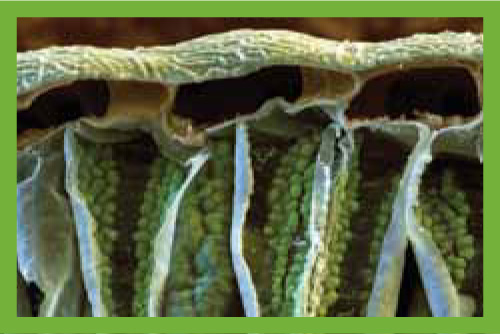CONTENTS
|
From the sun to you in just two steps |
|
|
Energy flows from the sun and through all life on earth. 136 |
|
|
4.1 |
Cars that run on french fry oil? Organisms and machines need energy to work. 136 |
|
4.2 |
Energy has two forms: kinetic and potential. 137 |
|
4.3 |
As energy is captured and converted, the amount of energy available to do work decreases. 139 |
|
4.4 |
ATP molecules are like free- |
|
Photosynthesis uses energy from sunlight to make food. 143 |
|
|
4.5 |
Where does plant matter come from? Photosynthesis: the big picture. 143 |
|
4.6 |
Photosynthesis takes place in the chloroplasts. 145 |
|
4.7 |
Light energy travels in waves: plant pigments absorb specific wavelengths. 146 |
|
4.8 |
Photons cause electrons in chlorophyll to enter an excited state. 148 |
|
4.9 |
Photosynthesis in detail: the energy of sunlight is captured as chemical energy. 149 |
|
4.10 |
Photosynthesis in detail: the captured energy of sunlight is used to make food. 152 |
|
4.11 |
The battle against world hunger can use plants adapted to water scarcity. 153 |
|
Living organisms extract energy through cellular respiration. 157 |
|
|
4.12 |
How do living organisms fuel their actions? Cellular respiration: the big picture. 157 |
|
4.13 |
The first step of cellular respiration: glycolysis is the universal energy- |
|
4.14 |
The second step of cellular respiration: the Krebs cycle extracts energy from sugar. 160 |
|
4.15 |
The third step of cellular respiration: ATP is built in the electron transport chain. 162 |
|
4.16 |
This is how we do it: Can we combat the fatigue and reduced cognitive functioning of jet lag with NADH pills? 165 |
|
There are alternative pathways to energy acquisition. 167 |
|
|
4.17 |
Beer, wine, and spirits are by- |
|
4.18 |
Eating a complete diet: cells can run on protein and fat as well as on glucose. 169 |
|
If you feed and protect your flowers in a vase, they’ll last longer. 170 |
|
VIII
 4 • Energy 135
4 • Energy 135 StreetBIO: KNOWLEDGE YOU CAN USE
StreetBIO: KNOWLEDGE YOU CAN USE